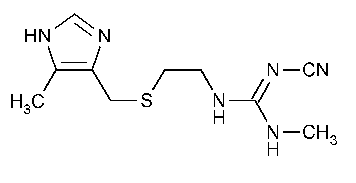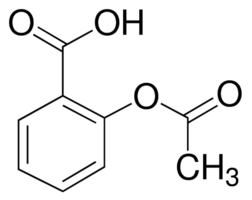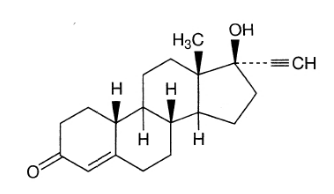Chemistry in Every Life
Table of Content |
|
|
Chemistry plays an important role in every part of our life. It had helped us in understanding different processes of life.
Drugs and Their Classification
Drugs are chemicals of low molecular mass which interacts with targets and bring about the response. Drugs are classified as follows-
On the Basis of Pharmacological Effect
These types of drugs are used by doctors for the treatment of a particular type of problem. For example, analgesics are used as pain killers, antiseptics are used to treat against microorganisms or any infection.
On the Basis of Drug Action
It is used to target a particular biochemical process. Such as, antihistamines inhibit the action of histamine which causes inflammation in the body. There are various ways in which action of histamines can be blocked.
On the Basis of Chemical Structure
Drugs classified on the basis of chemical structure often have similar structure and similar pharmacological activity. For Example, sulphonamides.
On the Basis of Molecular Targets
These drugs interact with biomolecules such as carbohydrates, lipids, proteins, and nucleic acids. Drugs possessing some common structural features may have the same mechanism of action on targets.
Therapeutic Action of Different Classes of Drugs
Antacids
Hydrochloric acid is produced in stomach to bring out the digestion process. But excess production of acid leads to acidity. Sometimes it may also lead to ulcers in the stomach. Earlier sodium hydrogen carbonate is used to treat acidity. Metal hydroxides are more preferred because of being insoluble and do not increase the pH above neutrality. Studies have reported that Histamine stimulates the release of pepsin and hydrochloric acid in stomach. A drug known as cimetidine prevents the interaction between histamine and the receptors in the stomach. This decreases the amount of released histamine. Later on, another drug came into the market which is known as ranitidine. This drug is still common among the people.
Fig. 1. Structure of Cimetidine
Antihistamines
Histamine is a vasodilator. It contracts the smooth muscles of the gut and the bronchi. Drugs such as brompheniramine (Dimetapp) and terfenadine (Seldane), act as antihistamines. These drugs compete with histamine for binding site on the receptors.
Neurologically Active Drugs
Tranquilizers
These are drugs used to treat stress, or other mental diseases. They also act as sleeping pills. There are different types of tranquilizers. For Example, noradrenaline plays an important role in mood changes. During low level of noradrenaline, person suffers from depression. For this situation, antidepressants are taken. Antidepressants inhibits enzymes that degrades noradrenaline.
Some tranquilizers such as chlordiazepoxide is mild tranquilizer. Equanil is another tranquilizer which is used for controlling depression and hypertension.
Fig. 2. Structure of Equanil
Analgesic
These drugs are used to treat pain without causing any mental illness. Analgesics are classified into- non-narcotic analgesic and narcotic analgesic.
Non-narcotic analgesic such as aspirin acts as inhibitor of prostaglandins. These drugs are also used to treat pain of arthritis. Analgesics are also used to reduce fever. Such drugs are known as Antipyretic.
Fig. 3. Structure of Aspirin
Narcotic analgesic is used to relieve pain and give a feeling of sleepiness. For Example, morphine. Excess dose of morphine may cause convulsions, coma, or even death.
Antimicrobials
Antimicrobials includes bacteria, viruses, fungi etc. it includes:
Antibiotic
These are used to treat infections caused by pathogens. Antibiotics in low dose inhibits the growth of the microorganisms. But these also inhibits the activity of beneficial bacteria. Some antibiotics kills the microorganisms, they are known as Bactericidal. For Example, Penicillin.
Some inhibits the microorganisms instead of killing them. Such drugs are known as Bacteriostatic. For Example, erythromycin, tetracycline.
Some antibiotics target only limited range of microorganisms, they are known as Narrow Spectrum Antibiotics. For Example, Penicillin G. But some target wide range of microorganisms, they are known as Broad Spectrum Antibiotic. For Example, Ampicillin.
Fig. 4. Structure of Ampicillin
Antiseptics and Disinfectants
Antiseptics and disinfectants also acts on microorganisms to kill or inhibit them. Antiseptics acts on living tissues. Such as Soframicine. They are not consumed orally, rather they are applied on infected area. Dettol is one of the commonly used antiseptics. It is a mixture of chloroxylenol and terpineol. Iodine also acts as powerful antiseptic.
Disinfectants are used on non-living objects such as drainage system, floors etc.1% solution of phenol acts as disinfectant.
Antifertility Drugs
These drugs are used to control the population. They are commonly known as Birth Control Pills. These drugs are composed of synthetic hormones. Norethindrone is an antifertility drug
Fig. 5. Structure of Norethindrone
which is a derivative of progesterone. Ethynylestradiol (novestrol) is an estrogen derivative which is used in combination with progesterone derivative.
Enzymes as Drug Targets
Catalytic Action of Enzymes
Enzymes catalyze different reactions. During catalysis, enzymes carry out different reactions-
The first function is the contact between the enzyme and the substrate. Enzyme contain active sites where substrate gets bound. The interaction between the substrate and the enzyme is based on different interaction such as hydrogen bonding, ionic interaction, vander waals forces
Fig. 6. Catalytic Action of Enzymes
The second function of an enzyme is to provide functional groups that will attack the substrate and carry out enzyme catalyzed reaction.
Drug Enzyme Interaction
Drugs can inhibit the activity of the enzyme by binding to its active site where substrate molecule bind. The chemicals that inhibits the activity of an enzyme is known as Enzyme Inhibitors.
Drugs acts as inhibitors in two different enzymes:
Some inhibitors act as competitive inhibitors by binding to a site where substrate molecule will bind.
Some enzymes known as Allosteric Enzymes contain allosteric site other than the active site of an enzyme. They modify the site in such a way that substrate will not be able to recognize the enzyme.
Receptors as Drug Targets
Receptors are proteins that are essential for communication. They are mostly embedded in the cell membrane. Certain chemicals are secreted by neuronal cells which are received by another neuron. These chemicals are known as Chemical Messengers.
There are a large number of different receptors in the body that interact with different chemical messengers. Drugs that inhibits the natural function of drug is known as Antagonistic Drug. They are used to block the activity of certain enzymes. There are other drugs also that mimics the natural function such as drugs which are known as Agonists.
Watch this Video for more reference
More Readings
View courses by askIITians


Design classes One-on-One in your own way with Top IITians/Medical Professionals
Click Here Know More

Complete Self Study Package designed by Industry Leading Experts
Click Here Know More

Live 1-1 coding classes to unleash the Creator in your Child
Click Here Know More






